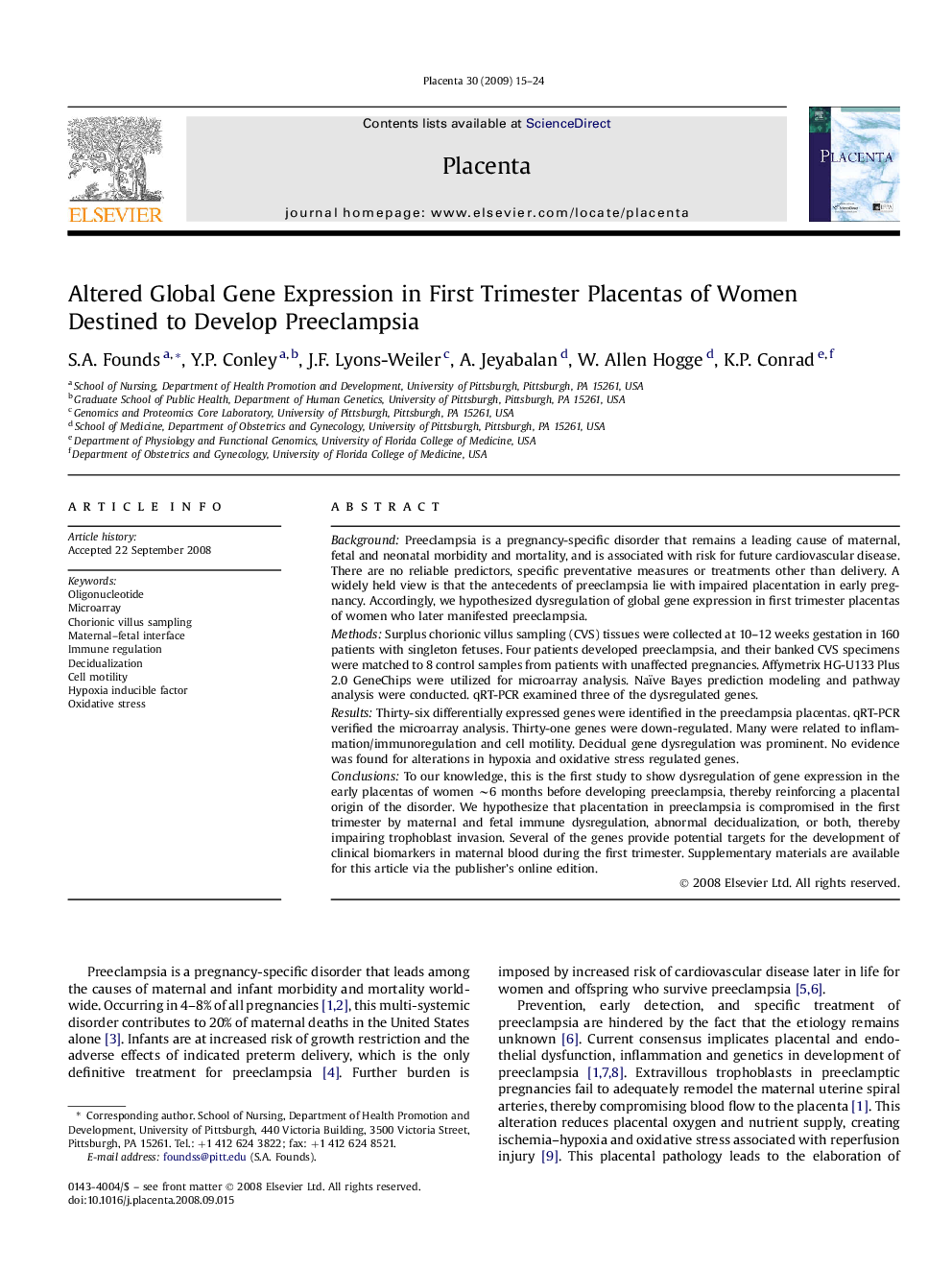| Article ID | Journal | Published Year | Pages | File Type |
|---|---|---|---|---|
| 2789942 | Placenta | 2009 | 10 Pages |
BackgroundPreeclampsia is a pregnancy-specific disorder that remains a leading cause of maternal, fetal and neonatal morbidity and mortality, and is associated with risk for future cardiovascular disease. There are no reliable predictors, specific preventative measures or treatments other than delivery. A widely held view is that the antecedents of preeclampsia lie with impaired placentation in early pregnancy. Accordingly, we hypothesized dysregulation of global gene expression in first trimester placentas of women who later manifested preeclampsia.MethodsSurplus chorionic villus sampling (CVS) tissues were collected at 10–12 weeks gestation in 160 patients with singleton fetuses. Four patients developed preeclampsia, and their banked CVS specimens were matched to 8 control samples from patients with unaffected pregnancies. Affymetrix HG-U133 Plus 2.0 GeneChips were utilized for microarray analysis. Naïve Bayes prediction modeling and pathway analysis were conducted. qRT-PCR examined three of the dysregulated genes.ResultsThirty-six differentially expressed genes were identified in the preeclampsia placentas. qRT-PCR verified the microarray analysis. Thirty-one genes were down-regulated. Many were related to inflammation/immunoregulation and cell motility. Decidual gene dysregulation was prominent. No evidence was found for alterations in hypoxia and oxidative stress regulated genes.ConclusionsTo our knowledge, this is the first study to show dysregulation of gene expression in the early placentas of women ∼6 months before developing preeclampsia, thereby reinforcing a placental origin of the disorder. We hypothesize that placentation in preeclampsia is compromised in the first trimester by maternal and fetal immune dysregulation, abnormal decidualization, or both, thereby impairing trophoblast invasion. Several of the genes provide potential targets for the development of clinical biomarkers in maternal blood during the first trimester. Supplementary materials are available for this article via the publisher's online edition.
